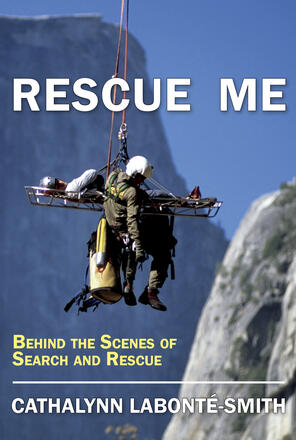
Rescue Me: Behind the Scenes of Search and Rescue
Review By Joseph Taylor III
January 18, 2024
BC Studies no. 220 Winter 2023/24 | p. 133-134
In the past thirty years search-and-rescue (SAR) tales have become a significant subgenre in outdoor recreational literature. One staple is the debrief, a sometimes-literal postmortem of tragedy, often meant to school readers on what not to do. The oldest such regular publication is the American Alpine Club’s Accidents in North American Mountaineering, first issued in 1948, but around the world many clubs have episodically tracked and reported noteworthy catastrophes for more than a century. Authors such as Butch Farabee sensationalize some of these tales for an apparently large consuming public, while others write manuals on techniques or the experiences of individuals and organizations. Cathalynn Labonté-Smith’s Rescue Me covers all these bases and more while focusing mainly but not exclusively on rescues and rescuers in British Columbia. As a historian who has studied and written about SAR, as well as served a dozen years on a volunteer fire and rescue company, I find the book making several useful interventions but also rushing past a lot of the sociological and political-economic implications of evidence.
The heart of Rescue Me are the biographies of local rescuers and organizations, and the narratives of call outs that illustrate the many environmental and technical challenges of SAR work. Most of this is based on oral interviews and media coverage. It is organized into chapters that center mostly on searches of cave, desert, forest, mountain, swiftwater, and underwater settings, or on technologies and techniques such as dogs, drones, horses, and rope work. All bare a consistent set of weaknesses and strengths. Specific details about the environmental contexts and technical difficulties of reaching, securing, and extracting people and bodies are threadbare. This is not a how-to book, but that is not really Labonté-Smith’s aim. She instead emphasizes the personal toll of SAR, focusing on the physical and emotional highs and lows, the trauma of dealing with traumatic injury and death. This is often well explained for those directly affected, but less attention goes to how those impacts radiate across families and communities. Rescue work is hard on many levels. Post-traumatic stress disorder plagues not only victims and rescuers but their families and friends. Labonté-Smith acknowledges but never pursues this reality.
The personal stories instead fulcrum two key points. The first is that SAR labour is nearly all volunteer. It involves hundreds and even thousands of hours to build and hone skills, pass written and practical exams, coordinate with teammates and other teams, and, when the call comes, be willing to extract oneself from whatever is going on to respond to the call, focus on its demands, and confront whatever comedy or tragedy awaits. This isn’t easy, as Labonté-Smith shows in the recruitment chapter, biographies, and call-out tales, but it is what rescuers do and do without pay. All that background is lost on the rescued and witnesses alike. The second point is the challenge of funding SAR, which in BC and across North America is usually reliant on self-funding, grants, donations, and beggary. Labonté-Smith notes this repeatedly, but constructive reforms are more gestured than explained. Pan out from BC, Canada, and even North America, and one can see many workable models. In rural places volunteerism is an unavoidable necessity. Setting aside the fiscal limits of local government, most places experience too few calls to warrant SAR-trained professionals. Even SAR units in major recreation areas such as ski resorts and national parks rely on volunteers and subsidies such as free lift tickets or campsites. Other countries outsource labour to insurance-supported public- and private-rescue businesses. Those broader comparisons are also absent, but Rescue Me still makes many important contributions.
Publication Information
Labonté-Smith, Cathalynn. Rescue Me: Behind the Scenes of Search and Rescue. Qualicum Beach, BC: Caitlin Press, 2022. 224 pp. $26.00 paper.
